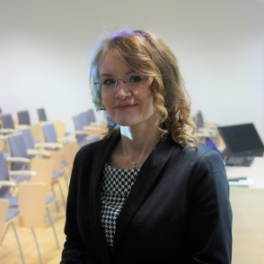Topic Editors








Towards a Greener Tomorrow—Modern Trends in Cooling and Water Solutions

Topic Information
Dear Colleagues,
Increasing energy efficiency, reducing energy demand and greenhouse gas emissions, and using waste and renewable and recycled heat from low-temperature sources are significant goals today captured in the concept of 4th Generation District Heating (4GDH). On the other hand, around 1 billion people worldwide suffer from water scarcity, and a further 3 billion are approaching the same fate. Only 2.5% of the total water is freshwater, of which around 70% is unavailable. Only 0.4% constitutes the most valuable part of freshwater, and low-grade waste heat recovery using heat pumps is one of the most effective ways of cooling and freshwater production from renewable and waste heat of the near ambient temperature, including sewage water, solar heat, and underground resources. This Topic aims to bring together research on advances in modelling, optimization, and simulations and the design and performance of cooling and water production systems. Original research articles, reviews and communications articles are welcomed.
Prof. Dr. Jaroslaw Krzywanski
Dr. Marcin Sosnowski
Dr. Karol Sztekler
Dr. Anna Pajdak
Dr. Anna Zylka
Dr. Anna Kulakowska
Dr. Karolina Grabowska
Dr. Dorian Skrobek
Topic Editors
Keywords
- cooling
- water production
- modeling
- simulation
- machine learning
- artificial intelligence
- optimization
- energy systems
- renewable energy
- energy policy
Participating Journals
| Journal Name | Impact Factor | CiteScore | Launched Year | First Decision (median) | APC | |
|---|---|---|---|---|---|---|

Energies
|
3.2 | 5.5 | 2008 | 16.1 Days | CHF 2600 | Submit |

Processes
|
3.5 | 4.7 | 2013 | 13.7 Days | CHF 2400 | Submit |

Water
|
3.4 | 5.5 | 2009 | 16.5 Days | CHF 2600 | Submit |

Sustainability
|
3.9 | 5.8 | 2009 | 18.8 Days | CHF 2400 | Submit |

Buildings
|
3.8 | 3.1 | 2011 | 14.6 Days | CHF 2600 | Submit |

MDPI Topics is cooperating with Preprints.org and has built a direct connection between MDPI journals and Preprints.org. Authors are encouraged to enjoy the benefits by posting a preprint at Preprints.org prior to publication:
- Immediately share your ideas ahead of publication and establish your research priority;
- Protect your idea from being stolen with this time-stamped preprint article;
- Enhance the exposure and impact of your research;
- Receive feedback from your peers in advance;
- Have it indexed in Web of Science (Preprint Citation Index), Google Scholar, Crossref, SHARE, PrePubMed, Scilit and Europe PMC.

